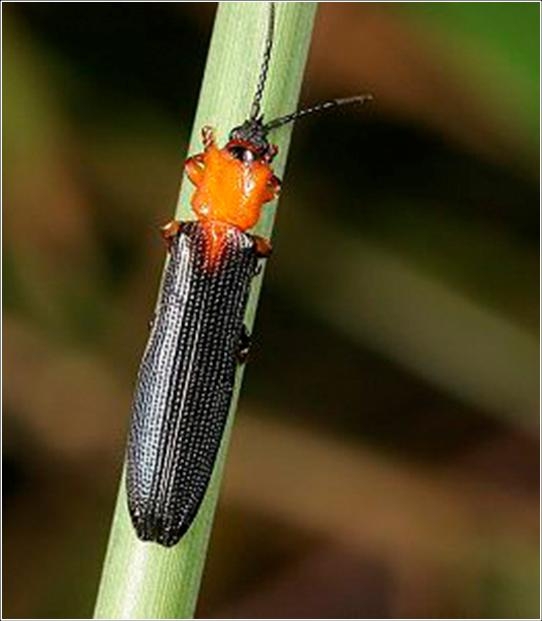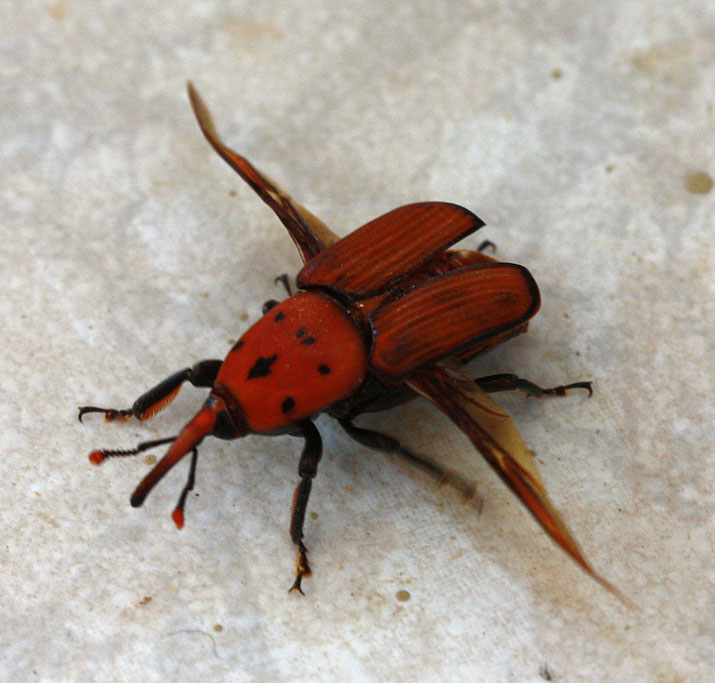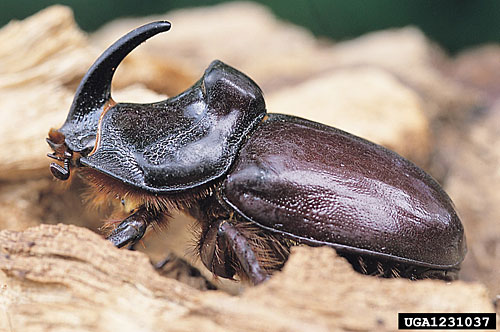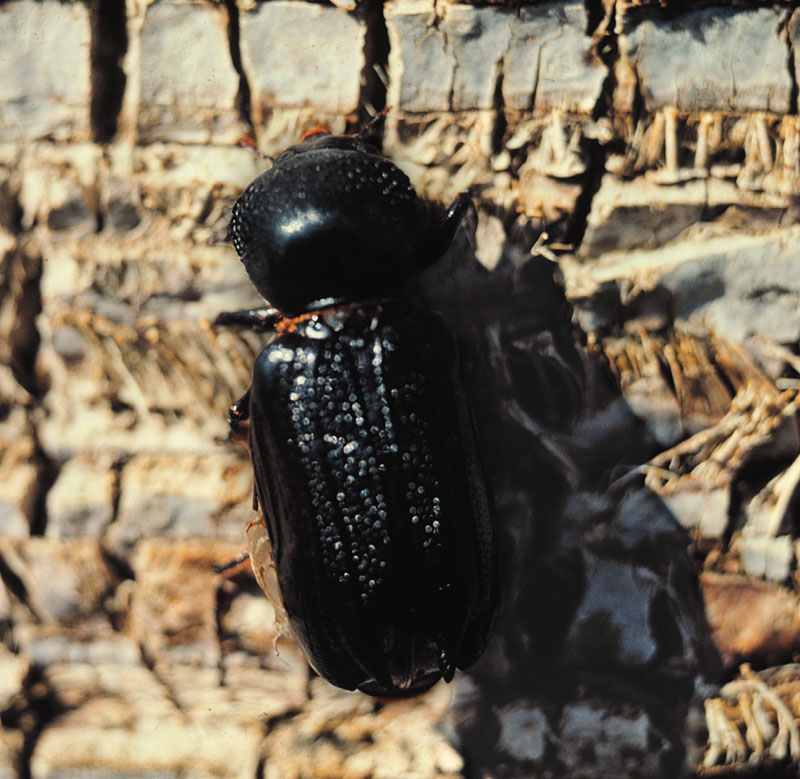Beetles (Coleoptera)
|
coconut leaf beetle, Brontispa longissima; Photo by Muhammad Haseeb, Florida A&M University |
|
red palm weevil, Rhynchophorus ferrugineus, with hindwings extended; Photo by Sarah Faulwetter |
|
European rhinoceros beetle, Oryctes nasicornis, male, lateral view; Photo by Gyorgy Csoka, Hungary Forest Research Institute, Bugwood.org |
|
giant palm borer, Dinapate wrighti, on Washingtonia filifera; Photo by Timothy K. Broschat, University of Florida, IFAS/FLREC |
|
common ambrosia beetle, Platypus parallelus, dorsal view; Photo by Simon Hinkley and Ken Walker, Museum Victoria, Pests and Diseases Image Library |
Rank & taxon
Order Coleoptera
Description
Adult: Beetles can range widely in size, from less than 1 mm to 200 mm in length. Beetles are characterized by hardened pair of forewings known as elytraelytra:
the tough, hardened forewings of beetles (singular elytron; see also hemelytra)
that usually protect the second pair of membranous wings used for flight. Some beetles have lost the ability to fly and the elytraelytra:
the tough, hardened forewings of beetles (singular elytron; see also hemelytra)
are fused. Beetles have a generally depressed body shape, with the legs situated on the ventral surface of the body. Beetles vary widely in color, and in each family, the form of specific organs and appendages differs within the general beetle body plan.
Larva: Larvae vary widely in appearance within the order, though they are generally similar within families. They may be differentiated from larvae of other insects by their hardened, often darkly colored head and the presence of chewing mouthparts.
Distribution
Worldwide, over 350,000 described species
Biology/life cycle
Beetles are holometabolousholometabolous:
with complete metamorphosis, including egg, larval, pupal, and adult phases
, undergoing complete metamorphosis. Life histories vary widely within the group; some persist in the larval form for years while others go through their entire life cycle in only a few days. The larva is usually the principal feeding stage, feeding voraciously to support their growth prior to pupation. Dramatic variation may also be seen in feeding strategies; beetles may be carnivorouscarnivorous:
feeding upon other animals
, saprophagoussaprophagous:
feeding upon dead or decaying plant or animal tissue
, coprophagouscoprophagous:
feeding upon fecal matter
, phytophagousphytophagous:
feeding upon plant matter
, mycophagousmycophagous:
feeding upon fungal matter
, or parasiticparasitic:
living in close association with another species (host), feeding upon it while providing no benefit
. Some species are highly host specific, whereas some are generalists and will feed on almost anything. Most pest species are either defoliators or borers, and may be pests as either larvae, adults, or both. Many beetle species are considered beneficial, serving as pollinators or predators of other pests.
Hosts
Palms: a wide variety of palms
Other: nearly every plant species
Representative taxa on palms
The coconut leaf beetle (Brontispa longissima) is one of the most damaging pests on coconut palms (Cocos nucifera), but may also infest over 20 other species of palm. It feeds on young leaves, causing damage to seedlings as well as mature palms. It is a serious pest in coconut palm growing regions throughout the Pacific.
The red palm weevil, Rhynchophorus ferrugineus, is a serious pest of Cocos nucifera (coconut palm) in Southeast Asia and Phoenix dactylifera (date palm) in the Middle East. Red palm weevil has recently been introduced to the Caribbean and has the potential to be a harmful pest in any area where palms are widely grown.
Additional comments
Beetles represent 25% of all known plant and animal species and are by far the largest contributor to the planet's macroscopic biodiversity.







